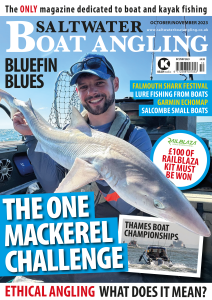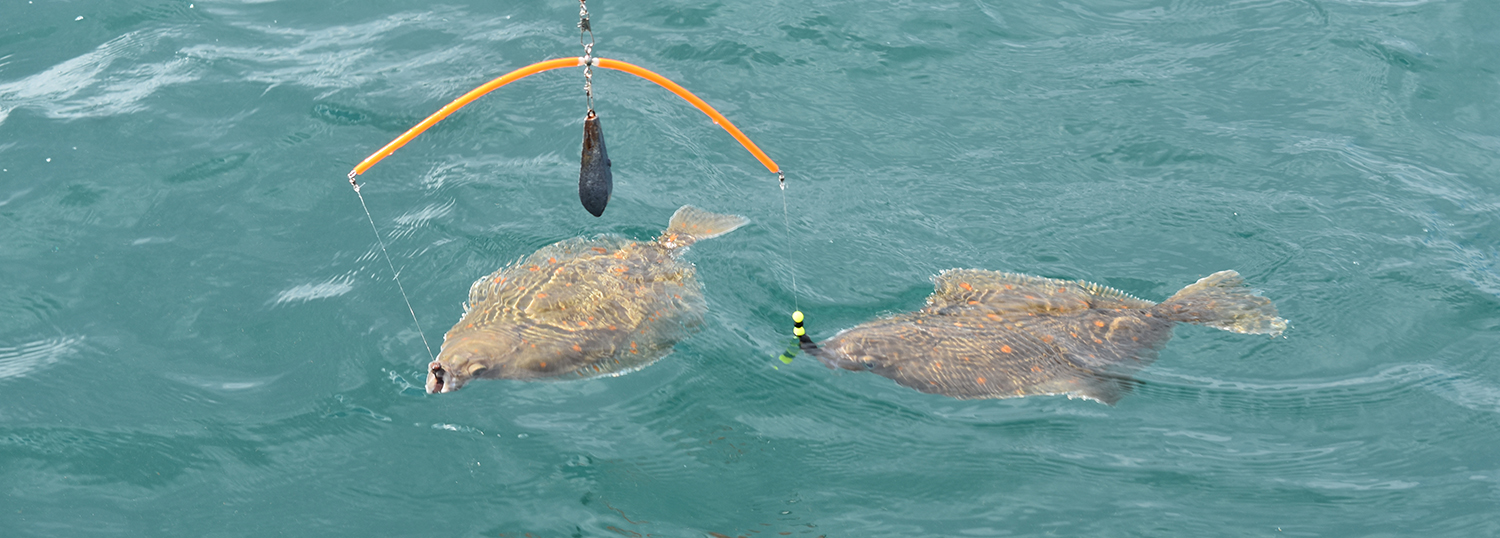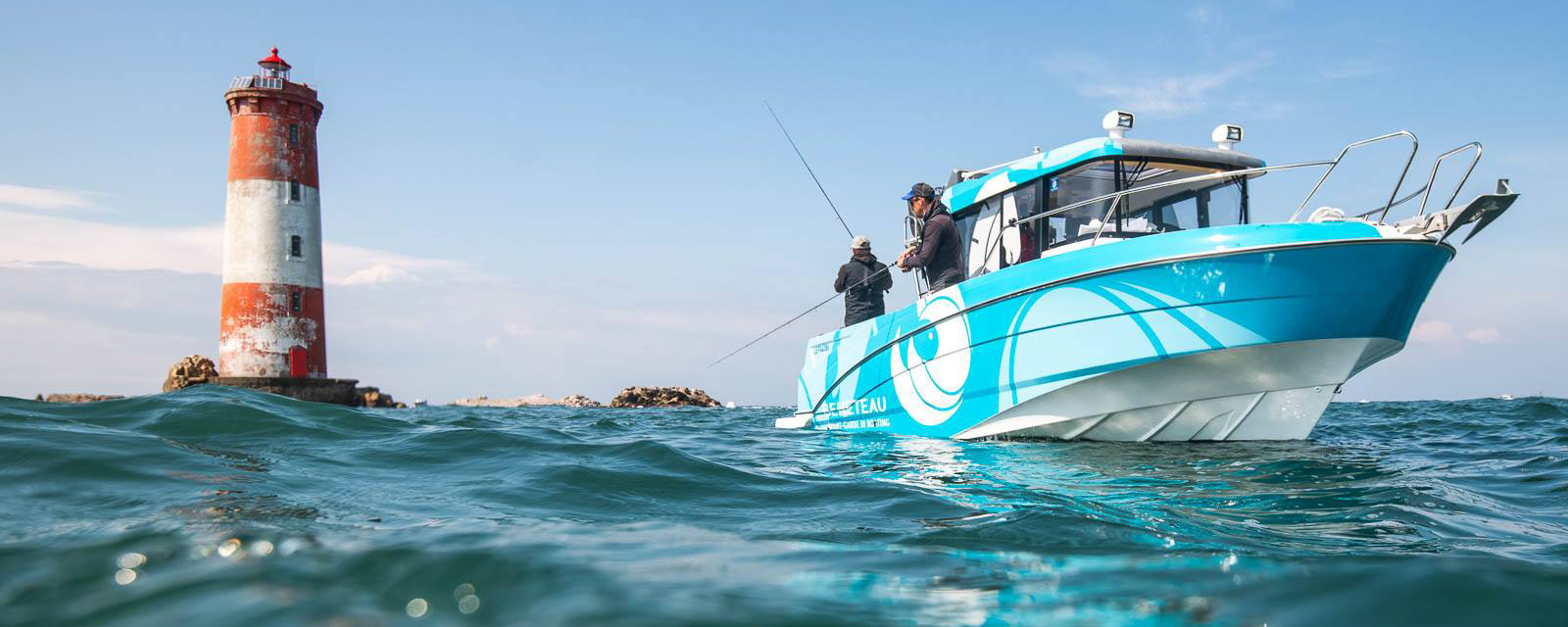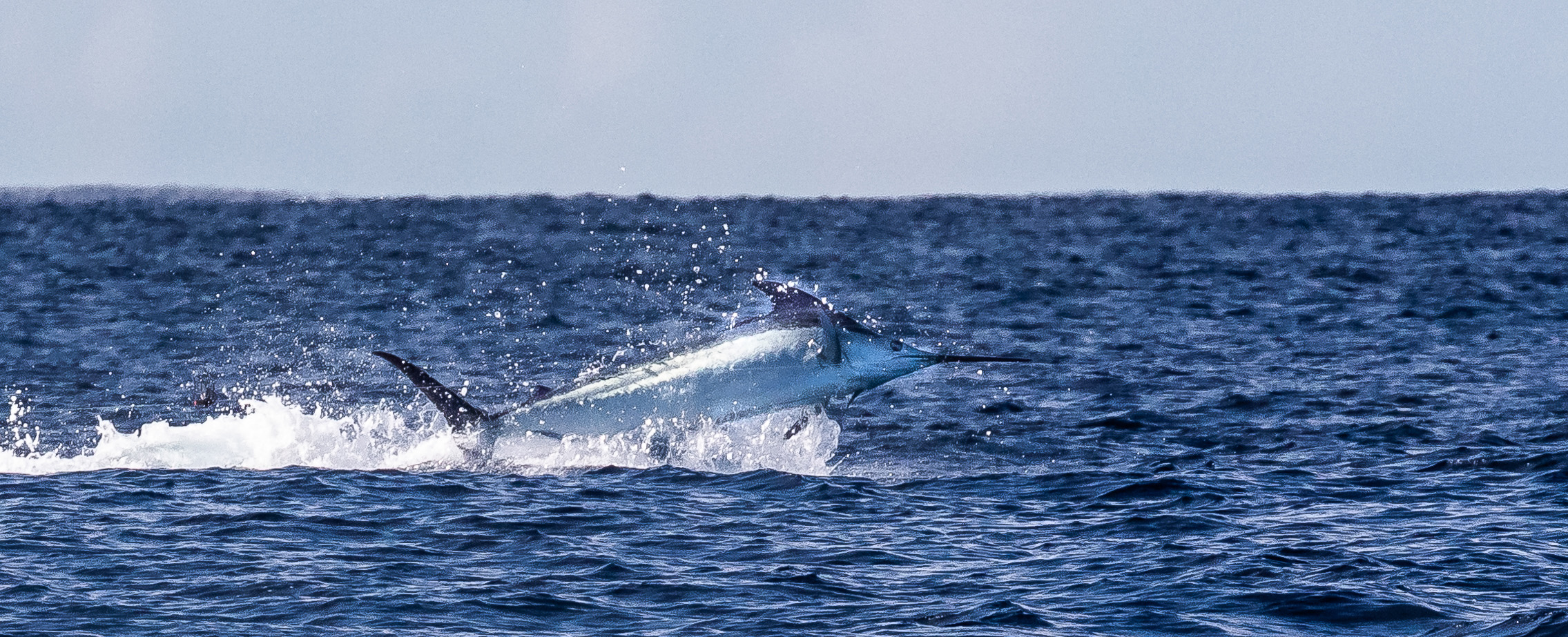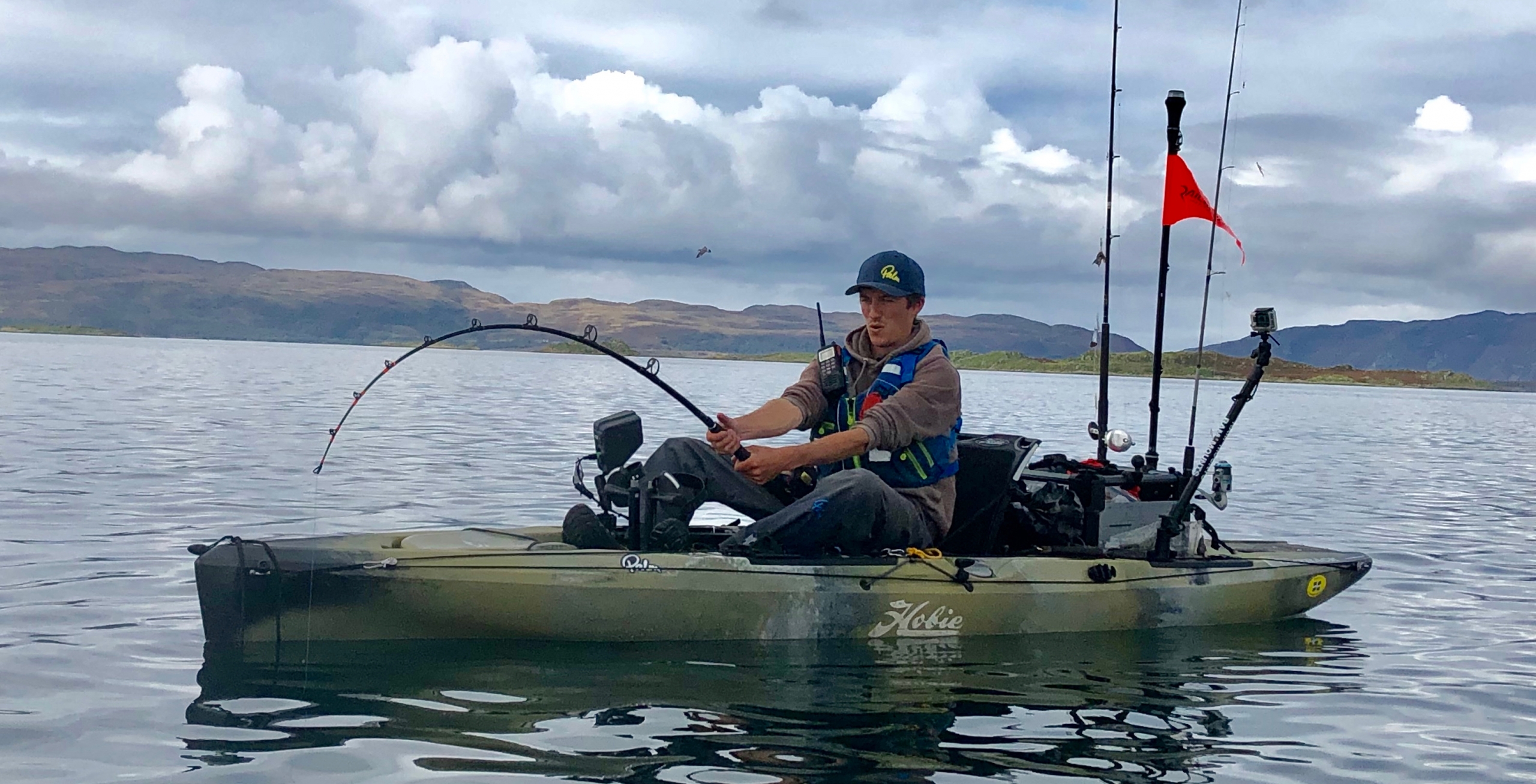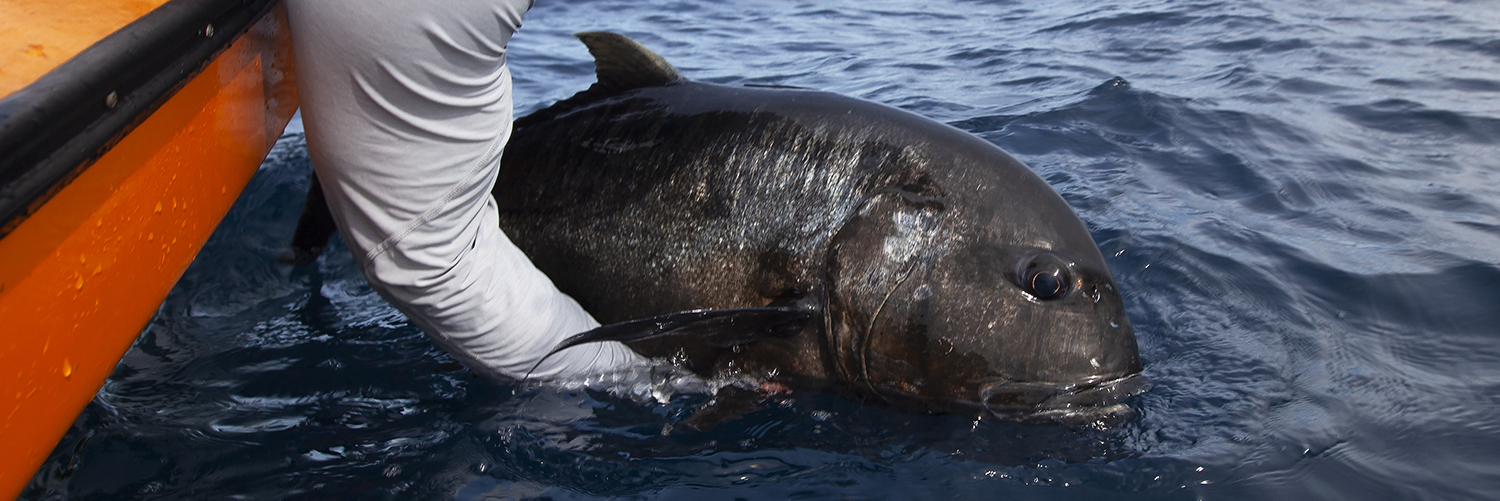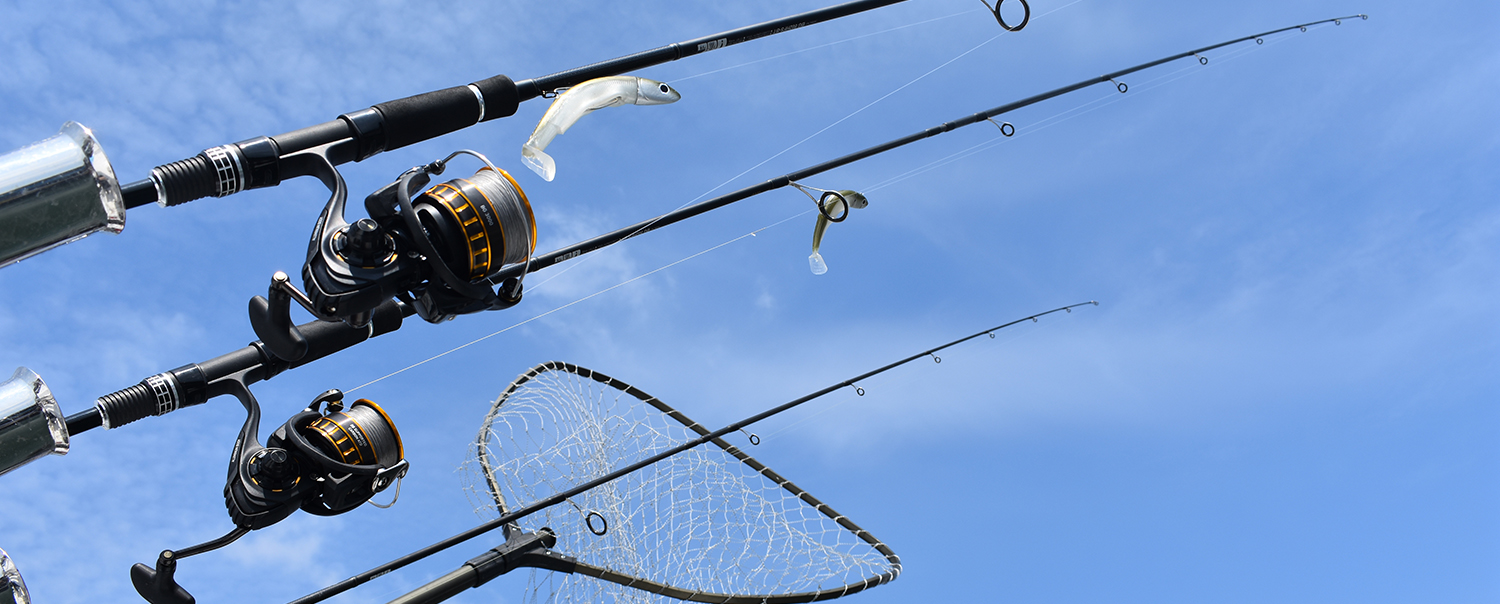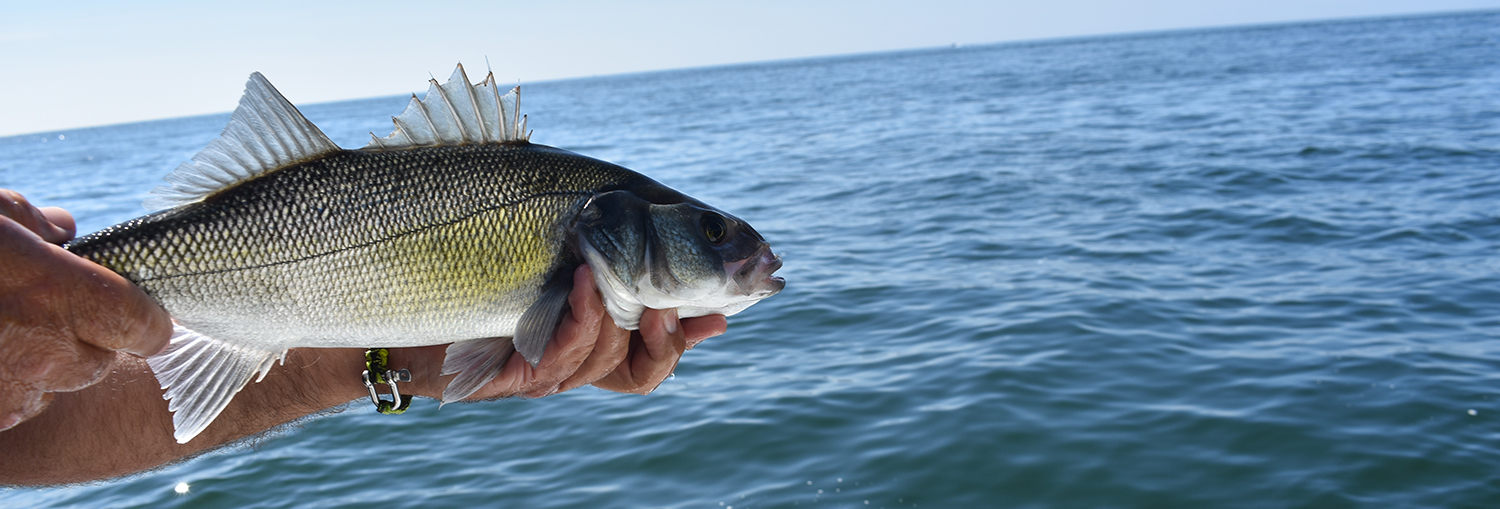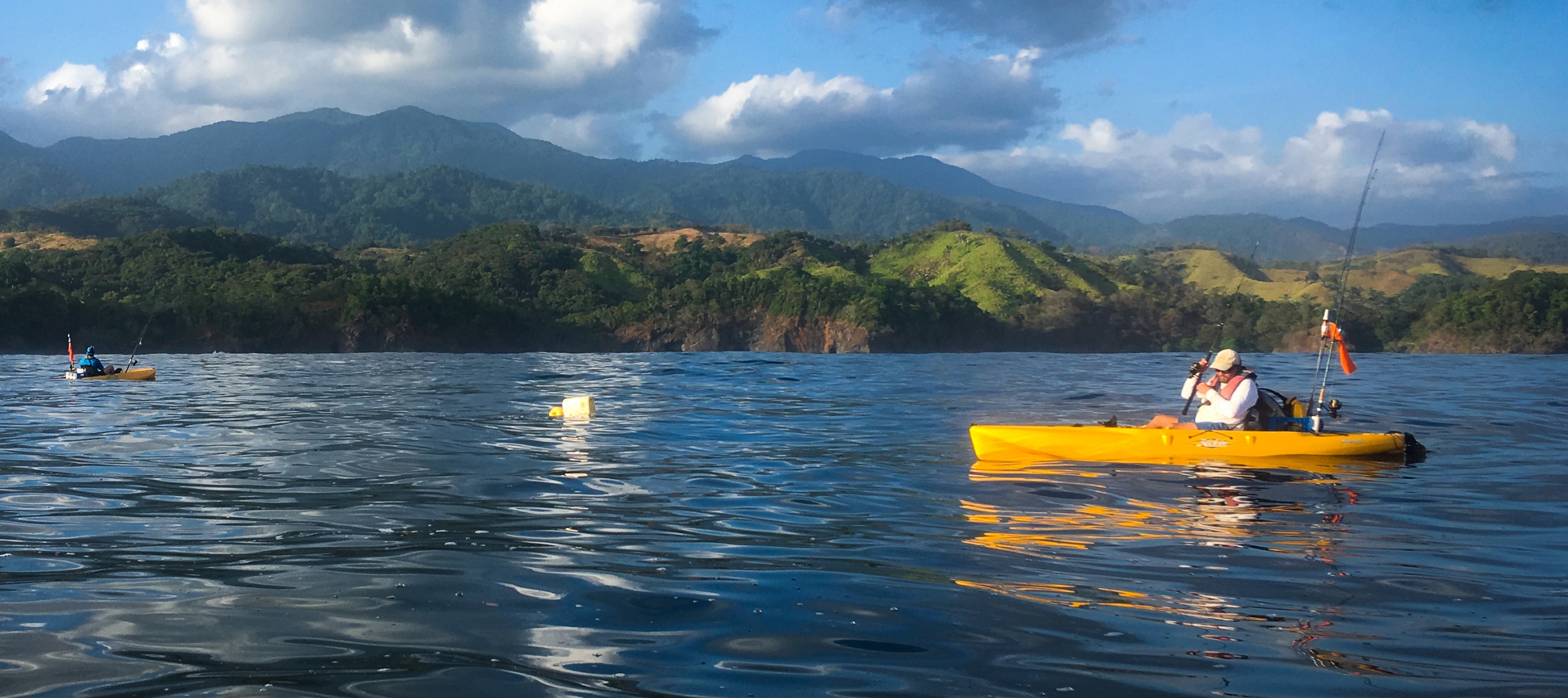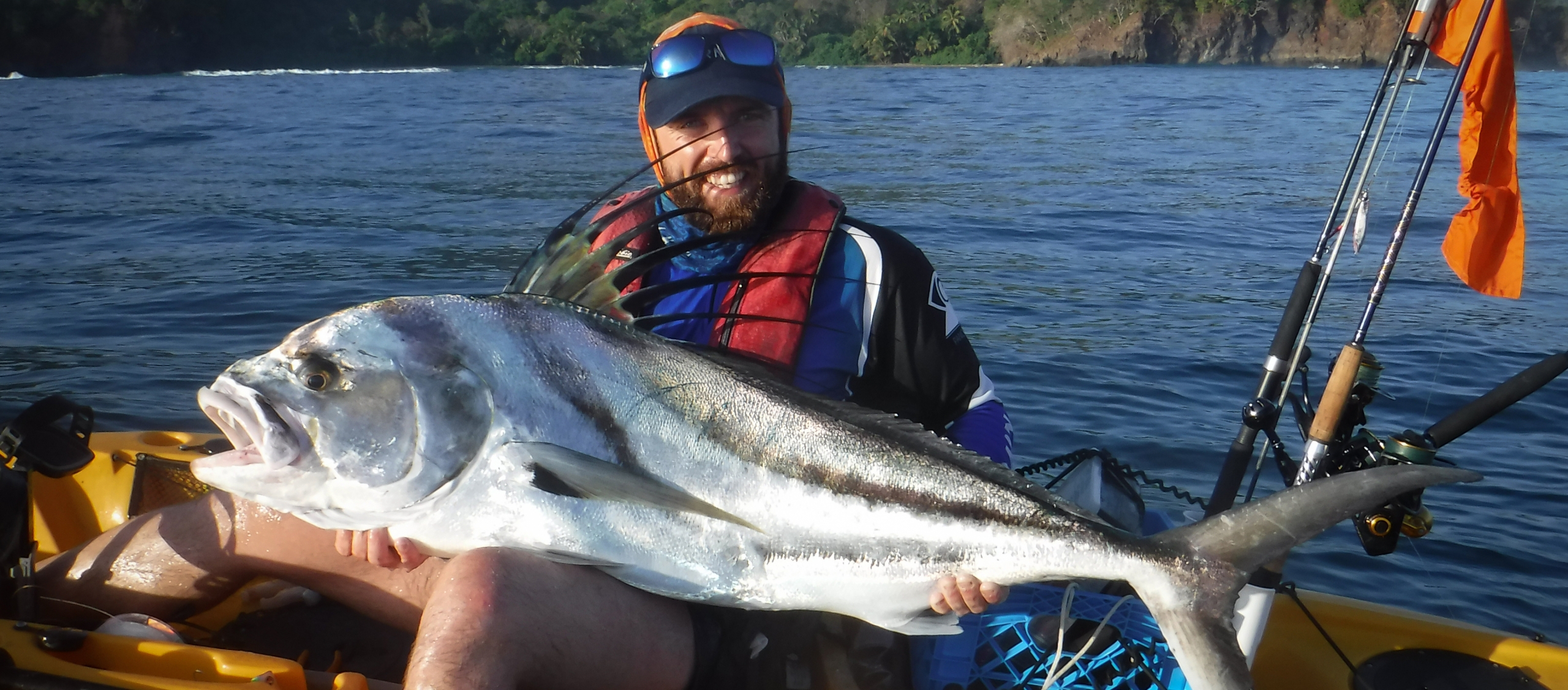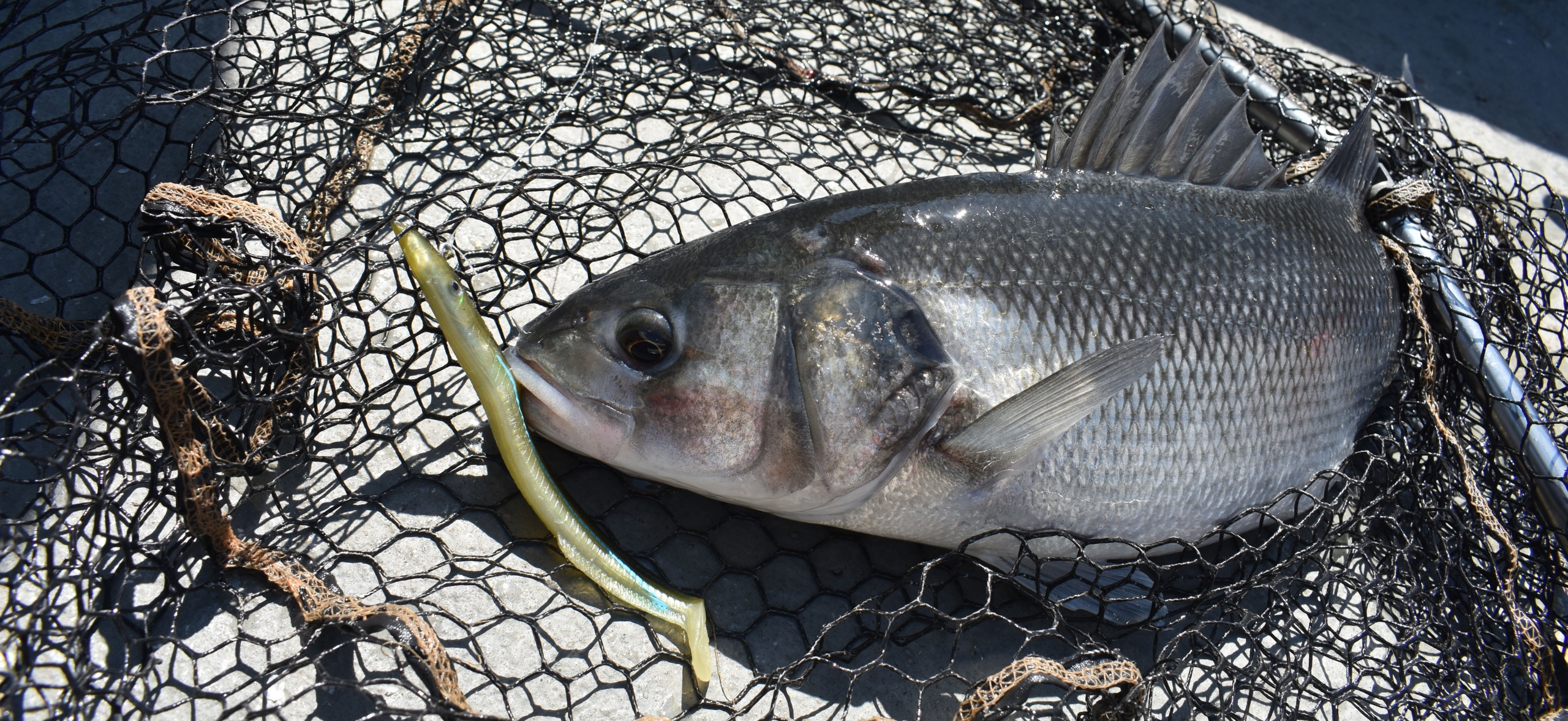Experienced boat owner Tim Macpherson assesses what you need to think about when buying your own boat.
If you are reading this then chances are you are already a committed boat angler – be it in a charter boat, a mate’s boat or your own craft. However, we thought it would be a good idea to spell out the things we need to think about when choosing a boat of your own. It is really simple to go and buy any old boat, there is always someone wanting to sell up somewhere and websites are generally stuffed full of new and used craft. But before diving in its worth taking time to consider a few relevant issues you will have to take into account.
So, here’s a handy check list which we hope will help:
What experience do you have in handling and crewing a boat?
This might seem a daft question but it is important – the sea is a dangerous place and boats come in all shapes and sizes with varying degrees of skill required to pilot them. Have you ever owned a boat before? If so what kind? Do you know the ‘rules’ of the sea and are familiar with handling small craft in weather? Just worth thinking about before you do anything. As they say ‘the sea is a cruel mistress” and even experienced skippers can get into trouble so just think carefully about it before you buy.
There are boat skippering courses run by the RYA (more info at http://www.rya.org.uk) which are always recommended although they do cost time and money to complete. The question here is: what price a life?
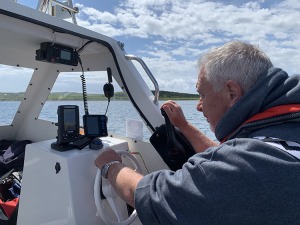
What are you using it for?
Do you just want something to get you a mile or two offshore and for pottering around in estuaries or are you aching to go out deep and fish on wrecks and reefs? The former and you can settle for something under 6m which can be launched from the beach or a trailer. The latter and you are going to need something big enough, up to 10m, to make sure you can get to where you want to go quickly enough and back in speedily if the weather turns. Also, there are very many different styles of boats available, so make sure that you the boats you are looking at are designed a) for angling and b) designed to be seaworthy.
Where are you planning to keep your boat?
Important to think this one through. You may want the type of boat which needs a mooring somewhere in your nearest port, marina. If so then consider the mooring costs, which can be considerable – anything from £2,000 upwards depending on the boat length.
The cheaper option would be to find a beach launching boat fishing club, of which there are quite a few along the south and east coasts particularly where there are shingle beaches or slipways. Some of these clubs have compounds to keep the boats secure. Many anglers, particularly in the West Country and Wales keep boats on trailers. This allows them much more flexibility in where they can launch as long as you can find suitable slipways to use. If you go down this route you will also need to consider the trailer you need and if one comes with it what state it is in.
Whether its beach, marina, mooring or trailer there are advantages with all of them but if you need bigger boat, say over 20 foot, to get you out to deeper marks then really beach and trailer are a much less attractive and more strenuous options.
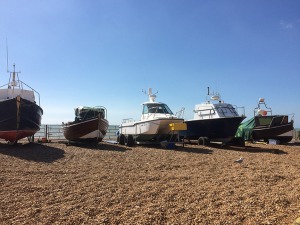
New or used?
Once you’ve decided on the whats and wheres the next thing to consider is how much you want to spend and whether you are happy with a used or new boat. If you can join an angling club you may be able to find advice on what kind of boat you can get and whether there might be one available at the club. Another option is, if possible, to go out with other boat owners and get feel for handling, engine size, size deck space and other considerations. If you are experienced, then you will know what to look for. If you are a novice then I would strongly suggest waiting until you have been out in a friend’s private boat a few times - and ask advice from them. Of course, when it comes to anglers there are always ten different ways to solve the same problem and boats are no different.
A new boat is obviously a much better option because you’ll be getting something which will be pristine with a new engine and you can usually be sure it will not have any modifications, repairs or other potential rat’s nests of potential problems A boat manufacturer or broker will allow you to test drive it and may even offer finance options. Some boat manufacturers will allow you to specify modifications to their basic models which is very useful.
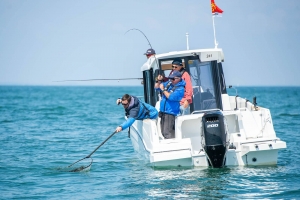
What to look for in a used boat.
Used boats have to be approached with extreme care, especially one which has been laid up unused, or sitting on a trailer for long periods. Inspect the keel (particularly if it is launched on a beach) and the general state of the hull – for instance can you see any obvious repairs? If it is under 5m does it come with oars and are the rowlocks in place? Are the electronics functioning? Is the wiring working? Is the anchor the right size for the boat? Does it have enough rope? All these things are important if you are going to get the best out the boat and more importantly be safe.
If you are not sure take along someone experienced for a second opinion. If it seems like a bargain, then it is probably too good to be true. If it is a boat used in a club you’re a member of (or thinking of joining) ask some of the other club members about it – you’ll soon get a feel for whether it’s a good investment.
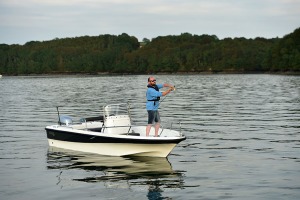
Engines
Most important of all is the engine, it is your life saver. Make sure it runs properly and if possible take it out to sea and find out what it is like under load. Engines run in tanks or on hoses can sound great and then you find when it’s pushing through the water that it’s got issues not apparent on land. Its great if you are an experienced mechanic but not everyone has this kind of skill and knowledge so make sure you do your research. As with the boat itself it helps if you can get a second opinion from someone who knows about engines. Outboards can last a long time as long as long as they are regularly serviced and looked after by successive owners.
Make sure you buy an engine which is the correct size for your boat. Most boats have an engine rating which if it isn’t available with the boat can be obtained from the manufacturer. If one is already attached to a boat you buy (which 90% of the time it will be) make sure it is in good working order before purchase and get it serviced BEFORE you venture out to sea in it for the first time. It may sometimes be difficult to identify the make of older boats, in which case the advice of experienced boaters having similar boats should be sought. It is easy to be tempted to fit a far larger engine than necessary but that can create adverse safety issues and would usually result in more fuel being used. Larger second-hand boats with inboard engines need careful consideration in view of the potentially large costs of any remedial work found to be necessary. Assessment by an experienced marine engineer and surveyor is recommended, especially one experienced in the particular make of engine.
The best engine in the world will not get you home if you can’t start it. All but the smaller outboard engines have electric start, relying on a battery. Due to the very high current required to start an engine, it is vital that the battery is in top condition and fully charged.
For more on engines click here.
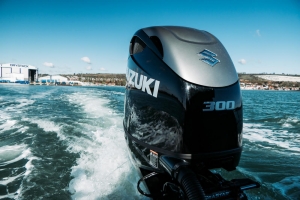
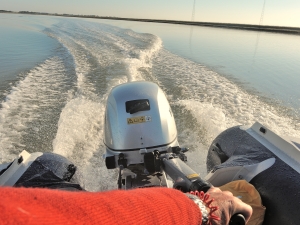
Hull Shapes
Displacement hulls are designed to sit in the water at the same level throughout their speed range and only need relatively small engines to propel them but their top speed is limited to being fairly slow. They tend to be stable and use little fuel per unit of distance travelled. The disadvantage is that, being slow, they take a long time to travel long distances. Putting a larger than recommended engine in them does not significantly increase their top speed which is limited by laws of physics that are too complex to explain here. Due to relatively low demand, they tend to be cheaper than other types.
Semi-displacement hulls are designed to partially rise up in the water once they reach a certain speed and this reduces water drag enabling higher maximum speeds to be achieved. At low speeds, they exhibit similar stability to displacement hulls but need relatively larger engines resulting in increased fuel usage but that is partially offset by shorter travelling times. They can be fitted with small engines but, whilst reducing fuel consumption, that also reduces maximum speed. They offer the best compromise between fuel efficiency, stability and speed. They are the most popular style for offshore angling and prices tend to be more than those for displacement craft of similar age and condition.
Planing hulls are designed to significantly rise up in the water once they reach a certain speed.
The significantly reduced water drag enables them to achieve high speeds. They tend to be the least stable of the hull designs and require larger engines to achieve their optimum speed. They tend to perform best in very calm conditions and suffer in choppy seas. With a few exceptions, they tend not to be favoured by anglers.
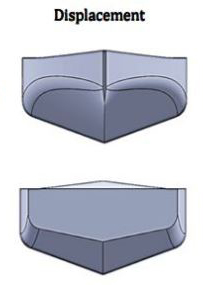
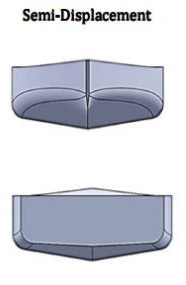
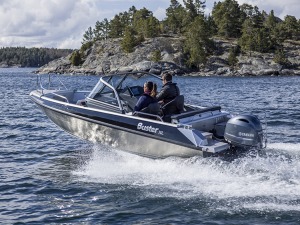
Insurance
Insurance
Whilst it is not currently compulsory, you would be foolish not to take out fully comprehensive insurance for your boat but insurance just against third party claims would be the minimum recommended since you could be liable for substantial damages claims in the unfortunate event that something goes wrong involving a passenger or another boat. If you need to rent a mooring then often the mooring provider will require you to have insurance as a condition of renting the mooring. Be aware that insurance providers often have requirements set by them that your boat has to meet. For older larger boats, that could include wanting a professional boat surveyors report on its condition and the installation of approved fire suppression systems for inboard engines. There may also be limitations on how far you can go offshore without invalidating your cover and there could be limitations in cover for single handed operations and/ or at night. Costs will vary with the smaller slower boat being cheapest and costs increase with increasing designed speed and/or size of boat.
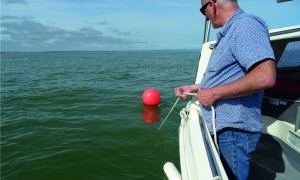
Maintenance
Be prepared to undertake regular maintenance at the very least on an annual basis.
Maintaining the engine in good working order including servicing, in accordance with the manufacturer’s instructions is vital, as is regularly checking the batteries and the bilge pumps (if they are fitted) For larger boats normally moored afloat, hauling out annually cleaning the hull of fouling and applying antifoul coatings is recommended.
For larger boats with inboard engines, regular checking and, if necessary, adjustment of the prop shaft seal is vital to prevent ingress of water. Some types of these seals need to be completely replaced after a number of years. The rudder shaft seal also needs to be checked.
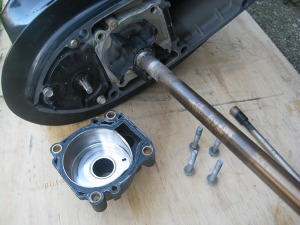
Anchors
Always carry an anchor appropriate to the size of the boat – and that includes the correct chain and rope length for the boat. One recommendation is that you use a scope of 3:1, meaning that for every foot of water depth, you should use 3 feet of rope. For example, to anchor in 10 feet of water, you would pay out 30 feet of line. In conditions of strong tides and/or less than calm conditions some extra rope would be deployed.
If you have a boat of less than 7m an anchor between 4Kg and 6Kg is appropriate for areas having little tide run but for anchoring in strong tides an anchor of 10Kg to 15Kg may well be required according to boat size. For larger boats in strong tides anchors of up to 20Kg may be required and that is probably the upper limit of what could be retrieved inboard by hand. You should carry the largest anchor you can feasibly fit on your boat but anchors over 20Kg would require the use of a winch to retrieve on board. Make sure the chain is a least the same length as your boat and is the short link type which is much heavier than the long link type for a given length - the chain is essential for keeping the anchor flat on the bottom in a tide. There are several patterns of anchor available and the advantages and disadvantages of each type can be found here in the anchoring section.
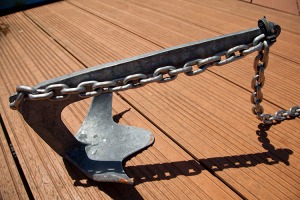
A boat partner?
Finally a popular option, to help reduce the costs and share the responsibility, is to start out by owning a boat jointly, particularly if you have one or two other anglers who you regularly fish with. In thirty years of bait owning, I’ve co owned almost all of them and it does make it much easier and cheaper to run.
If you enjoyed this article you can buy the issue or subscribe by clicking the links below:
Buy digital copies - £2.99 each Subscribe Now Digital Subscription Click here for 12 Months of digital issues for £19.99
